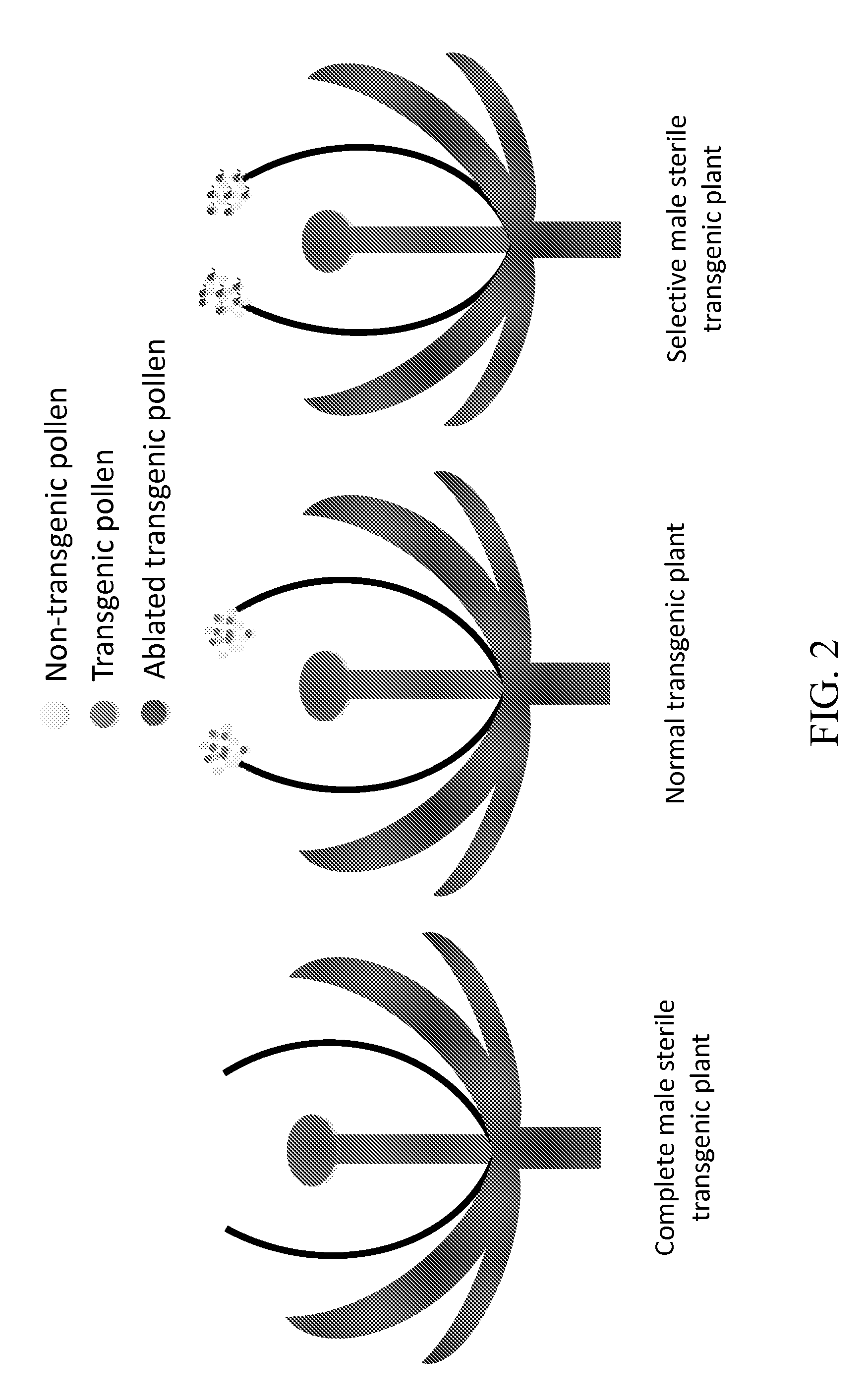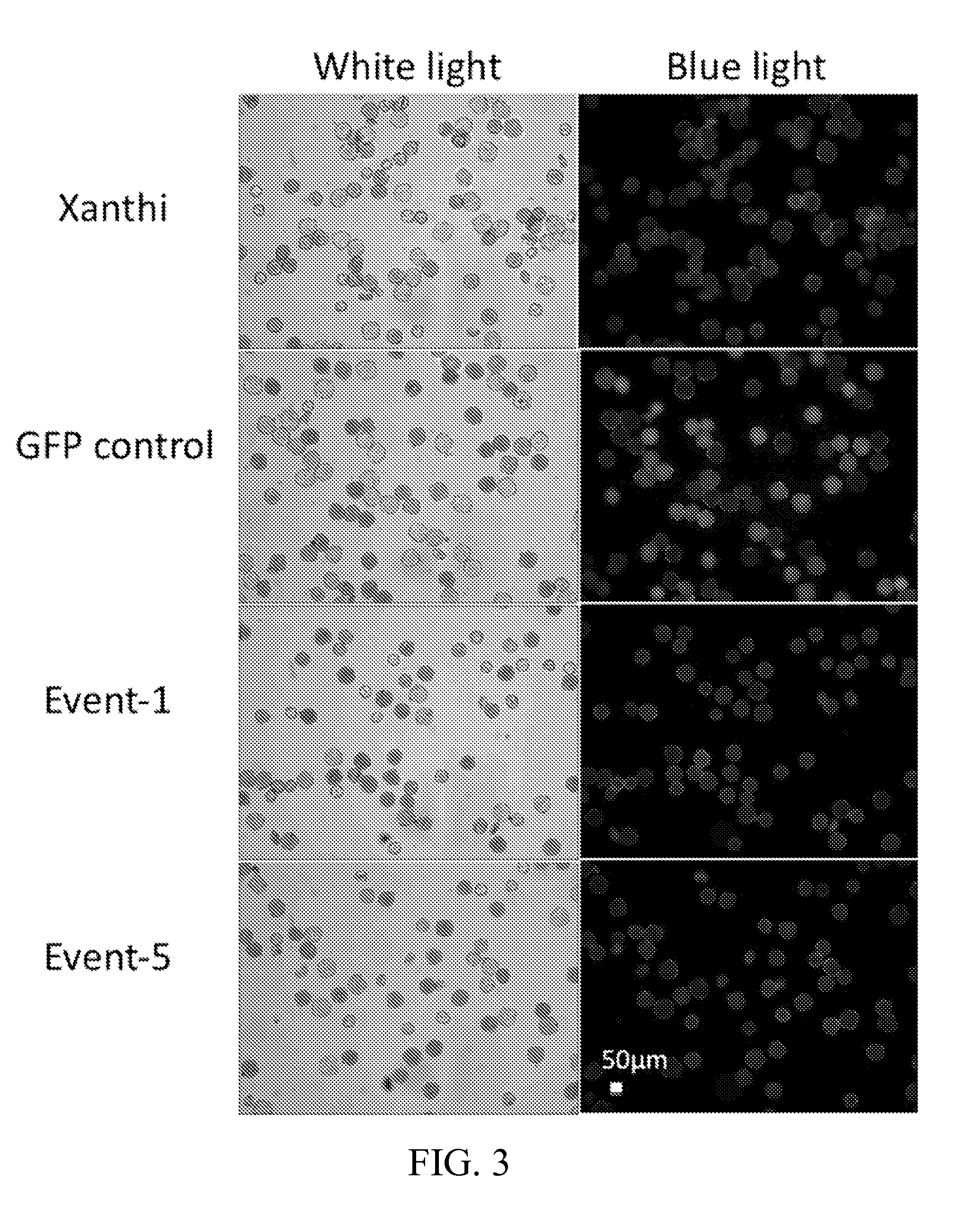Engineering male sterility or non-transgenic pollen
a technology of male sterility and pollen, applied in the field of engineering male sterility or non-transgenic pollen, can solve the problems of affecting the survival of pollen-feeding insects, and the potential for transgene transmission from the cytoplasm to the nucleus,
- Summary
- Abstract
- Description
- Claims
- Application Information
AI Technical Summary
Benefits of technology
Problems solved by technology
Method used
Image
Examples
example 1
Vector Constructs and Tobacco Transformation
[0045]A vector carrying a translational fusion of the EcoRI restriction endonuclease and G3GFP gene under the control of the pollen-specific LAT52 promoter was constructed with a R4 Gateway Binary Vector (Nakagawa et al., 2008) by using a site-specific multisite Gateway® cloning strategy. The pollen-specific promoter LAT52 derived from tomato has shown to direct high levels of pollen-specific transgene expression with undetectable levels of expression in all other part tissues in several dicotyledonous plants including tobacco (Twell et al., 1990). A plasmid vector carrying the EcoRI restriction endonuclease gene was kindly provided by Linda Jen-Jacobsen at the University of Pittsburg. The EcoRI gene was cloned into TOPO vector (pcr8-GW-TOPO, Invitrogen, Carlsbad, Calif., USA) without the stop codon to enable a reporter gene fusion construct. The LAT52 promoter was cloned into Multisite Gateway® vectors pENTR P4-P1r (Invitrogen, Carlsbad, ...
example 2
[0062]Type II restriction endonucleases, such as EcoRI are very well characterized and have long-served as workhorses for molecular biology. We placed an EcoRI-GFP fusion gene under the control of a pollen-specific promoter, which was stably integrated in transgenic tobacco. The resultant plants were self-fertilized and a flow cytometry method detected very few GFP-positive pollen grains, yet some events had decreased pollen viability. A test-cross to a male-sterile tobacco mutant (used as the female parent) was made and seeds were collected from the male-sterile parent and germinated on selective media and PCR-confirmed. Several of the transgenic lines displayed 100% efficacy for the male-sterile trait (of ˜40,000 seeds plated). Pollen-specific EcoRI expression appears to be an effective, and potentially universal pollen ablation tool that could be used in any plant species for transgene bioconfinement. In addition to its efficacy, there is no indication of any off-target effects t...
PUM
| Property | Measurement | Unit |
|---|---|---|
| distance | aaaaa | aaaaa |
| insecticide resistance | aaaaa | aaaaa |
| disease resistance | aaaaa | aaaaa |
Abstract
Description
Claims
Application Information
 Login to View More
Login to View More - R&D
- Intellectual Property
- Life Sciences
- Materials
- Tech Scout
- Unparalleled Data Quality
- Higher Quality Content
- 60% Fewer Hallucinations
Browse by: Latest US Patents, China's latest patents, Technical Efficacy Thesaurus, Application Domain, Technology Topic, Popular Technical Reports.
© 2025 PatSnap. All rights reserved.Legal|Privacy policy|Modern Slavery Act Transparency Statement|Sitemap|About US| Contact US: help@patsnap.com



